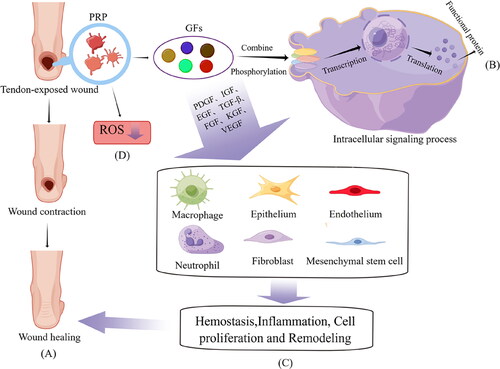Figures & data
Figure 1. Pathophysiological mechanisms in the pathogenesis of tendon exposed wounds. The mechanisms include bacterial infection, poor vascularization, insufficient growth factors and lack of repair cells.

Figure 2. Mechanisms of PRP for tendon exposure wounds. PRP promotes the secretion of growth factors of PDGF, egf other growth factors. At the same time, it inhibits the inflammatory response and reduces the production of local ROS. Finally, these cytokines act on MSCs, macrophages fibroblasts, etc., and ultimately promote wound healing by means of inflammatory responses, proliferation and remodeling.

Data availability statement
All data used or analyzed during this study are included in this published article.

